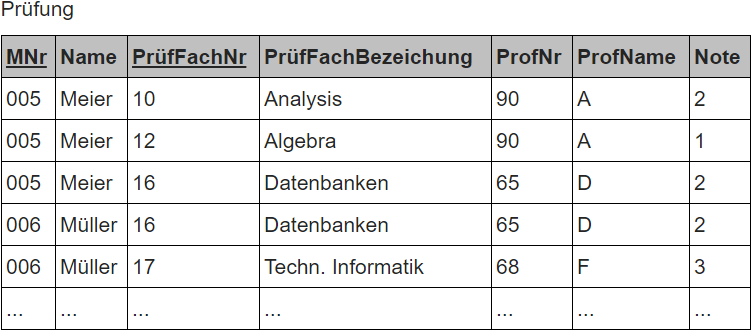
Live-Abfragen für einige Datenbanken können hier getätigt werden.
Grundlagen
Um ein Gefühl für SQL zu bekommen, erstmal eine Select-Query üblichen Ausmaßes:
SELECT person.name AS Name, election.label AS Wahl, COUNT(*) AS Stimmen
FROM person
INNER JOIN election_result_person
ON person.id = election_result_person.person_id
INNER JOIN election_result_election
ON election_result_person.election_result_id = election_result_election.election_result_id
INNER JOIN election
ON election_result_election.election_id = election.id
GROUP BY election_result_person.person_id;Die obige Abfrage ergibt folgendes Ergebnis (als Diagramm dargestellt):

Unter manchen Konfigurationen gibt das obige Beispiel eine Fehlermeldung aus, da es
sich nicht um ein vollständig qualifiziertes GROUP BY handelt (ohne HAVING). Die Konfiguration
kann folgendermaßen geändert werden:
mysql > SET GLOBAL sql_mode=(SELECT REPLACE(@@sql_mode,'ONLY_FULL_GROUP_BY',''));Um diese Konfiguration auch nach einem Neustart des Datenbankservice zu behalten, wird folgendes Kommando benötigt:
mysql > SET PERSIST sql_mode=(SELECT REPLACE(@@sql_mode,'ONLY_FULL_GROUP_BY',''));Normalformen
1. Normalform
Definition

Prüfung (MNr, Name, PrüfFachNr, PrüfFachBezeichung, ProfNr, ProfName, Note)
2. Normalform
Definition

Prüfung (↑MNr, ↑PrüfFachNr, Note)
Studenten (MNr, Name)
Prüfungsfächer (PrüfFachNr, PrüfFachBezeichung, ProfNr, ProfName)
3. Normalform
Definition

Prüfung (↑MNr, ↑PrüfFachNr, Note)
Studenten (MNr, Name)
Prüfungsfächer (PrüfFachNr, PrüfFachBezeichung, ↑ProfNr)
Prüfer (ProfNr, ProfName)


